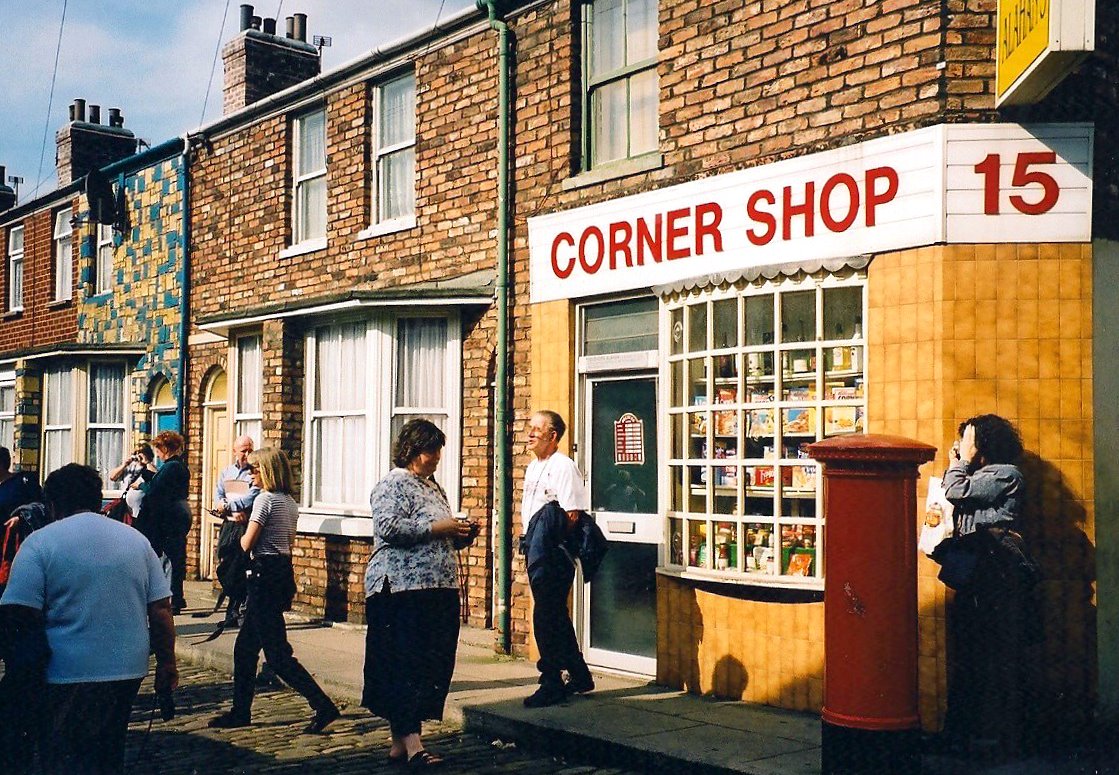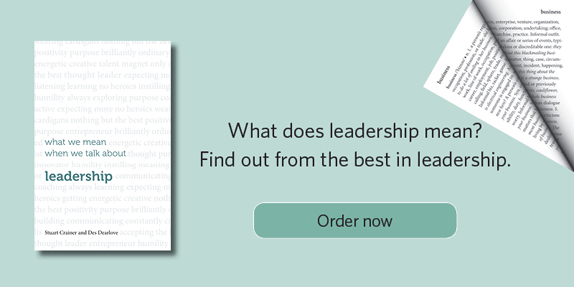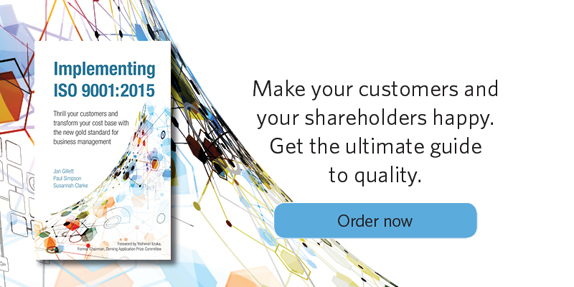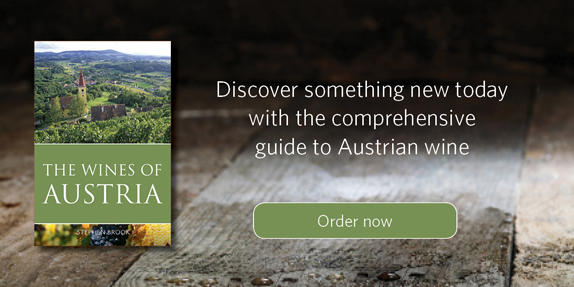Author Archives: Catherine Holdsworth
Game of thrones on business is an excellent stocking filler
22 December 2015 by Catherine Holdsworth in Business and finance, Game of Thrones on Business
Unless you’ve been hiding under a rock these past few months, there have been speculations running wild about the new series of Game of Thrones and, um, well…yeah, turns out that Jon Snow might still be alive. I mean, we certainly didn’t ever think this, we know nothing after all. We definitely didn’t believe it when we saw Kit’s luscious locks at Wimbledon, nor were we swayed when we saw pictures of him on the set. No, sir. If you tell us he’s dead, George Martin, then we believe you.
 And then HBO released the new poster for season six. Well, we were perhaps taken unawares. Not for a second did we ever believe the
And then HBO released the new poster for season six. Well, we were perhaps taken unawares. Not for a second did we ever believe the conspiracy fan theories that suggested Jon would come back and then we are thrown a curve ball.
So it turns out we really do know nothing about season 6. And as 2015 draws to a close, we’re thrilled that it will only bring us closer to what is promising to be an almighty instalment in the Game of Thrones series. If, however, you are struggling to come to terms with this shocking news, and are wondering what to get Steve from HR for Secret Santa, perhaps you should look no further than our very own Game of Thrones on Business by Tim Phillips and Rebecca Clare, shortlisted for the CMI Management Book of the Year, it provides excellent tips on how to use tactics and strategies from the show in the workplace. Did we mention that it fits in a stocking as well? We’re pretty sure that there is just enough time to order a copy for your colleague, loved one, Grandma, neighbour and mortal enemy.
What do leaders really do?
17 December 2015 by Catherine Holdsworth in Business and finance
The C-Suite is the goal for many budding entrepreneurs who are rising through the ranks of businesses, leadership is a position that so many people aspire to. But what does leadership actually mean? And, more importantly, when you reach the position of leader, what do you really do? Stuart Crainer and Des Dearlove, co-authors of What we mean when we talk about leadership seem to have the answers…
Mid-way through the Wimbledon Men’s Singles Final the television cameras scanned the crowd in the royal box. There were past winners, sporting greats, politicians and celebrities of various degrees of permanence. Among them was a single figure who appeared less intent on the irresistible rise of Novak Djokovic and more on the smart phone in his hand. He was Sir Martin Sorrell, the CEO of WPP.
For the modern leader there is no rest from the steady stream of emails, the demands on their time. There is no hiding place. Sixty percent of CEO time is taken up by meetings; CEOs spend 25 percent of their time on phone calls and at public events; only 15 percent of CEO time is spent working alone. It has been estimated in the California Management Review that managers can spend two to three hours each day reading, sending and responding to emails. And then there are mundane traditional tasks – more research suggests that, on average, paperwork and related tasks consume 11.6 hours per week or approximately 25 percent of a manager’s time, with senior managers both spending more time on these tasks and finding it more disruptive than middle managers.
At the very top, there appears a relish for such demands. Sir Martin famously promises to reply to anyone in WPP who emails him within twenty-four hours. He calculates that for anyone to bother the CEO it has to be something important. (We have emailed Sorrell and he is true to his word.)

Talking with one CEO, he summed up his modus operandi: ‘The reality is that every time I am on the move, I make a call; every time I have a break I call someone. I go through a mental list of who I haven’t spoken to for a while or someone who I know has a new piece of work on, or family news – they’ve just had a new baby or something.’
And yet, here was a man clearly happy in his work. ‘The life of a CEO is not for everyone,’ he told us. ‘It is a grueling, stressful and often lonely, existence. It is physically, mentally and emotionally demanding. And, of course, there is no guarantee of success or even survival in the post. So why do it? Because, on a good day, it is also the best job in the world.’ (We should note that for this individual the best job in the world was his for only a couple of years before an internal spat saw him ejected.)
Most jobs come with a job description, a lengthy list of the exact parameters of responsibility. But when you reach leadership roles, the job descriptions come to an end. You are left alone to make it up as you go along. The only sure thing is that you will be expected to deliver results.
The loneliness can be oppressive – and partly explains the rise of the executive coaching industry. Not knowing what it is you should do or when or with who, offers more freedom than most executives have usually experienced in the corporate cocoon. In their previous incarnations executives have often been purveyors of certainty; as leaders they find that uncertainty rules. It can bewilder even the best prepared.
Little coherent research has been done as to how leaders do and should manage their daily working lives. (‘Filling out a six-page academic survey is rarely high on a CEO’s daily to-do list,’ reflects London Business School’s Rajesh Chandy.) Indeed, the reality largely went unexplored until Henry Mintzberg’s The Nature of Managerial Work, was published in 1973. Instead of accepting pat answers to perennial questions, Mintzberg went in search of executive reality. He simply observed what a number of managers actually did. The resulting book blew away the managerial mystique.
Rather than spending time contemplating the long term, Mintzberg found that managers were slaves to the moment, moving from task to task with every move dogged by another diversion, another call. The median time spent on any one issue was a mere nine minutes – remember this was nearly a quarter of a century before email. In The Nature of Managerial Work, Mintzberg identifies the characteristics of the manager at work. The manager:
- performs a great quantity of work at an unrelenting pace;
- undertakes activities marked by variety, brevity and fragmentation;
- has a preference for issues which are current, specific and non-routine;
- prefers verbal rather than written means of communication;
- acts within a web of internal and external contacts;
- is subject to heavy constraints but can exert some control over the work.
This may sound familiar.
Over thirty years later in Managing, Mintzberg revisited the subject of the 1973 book. He argues that the nature of managerial work hasn’t actually changed:
The content of managing changes all the time – what you’re dealing with, how your industry is structured – but the process hasn’t changed. The one big thing is the Internet and especially email, but I think those forms of communications just reinforce problematic behavior. So I think they’re just making it worse, but I don’t think they’re changing management fundamentally. One thing that I admit has changed is that management has been ignored in favor of leadership.
(The relationship between management and leadership is often discussed. We regard leadership as management on steroids, heightened and intense, but from the same essence.)
Mintzberg contends that though communication is a huge part of the job of management – managers spend 50 percent of their time, in some cases, on communication – this is nothing new. He cites a 1940s study of Swedish managing directors which found that they were inundated with reports and couldn’t keep up. The world has changed, but the essence and frustrations remain largely consistent. Leadership is a 24/7 job.
Resources
www.bnet.com/blog/business-research/study-how-ceos-really-spendtheir-time/1123
Henry Mintzberg was the recipient of the Lifetime Achievement Award at Thinkers50 2015. More of his sometimes trenchant, often entertaining and usually illuminating views can be found at www.henrymintzberg.com
Risk and opportunity go hand in hand when updating to the new ISO standard
4 December 2015 by Catherine Holdsworth in Business and finance, Implementing ISO 9001:2015
Paul Simpson, co-author of Implementing ISO 9001:2015 looks into how taking risks and opportunities is key when building a business but can the updated ISO standards help to deliver that elusive ‘pot of gold’?
One of the big new ideas in the 2015 edition of ISO 9001 is ‘Risk Based Thinking’ and if you are to believe the Twitterati the concept is akin to the subject of Edvard Munch’s painting ‘The Scream’ as the quality management landscape turns vibrant orange behind them. But before the hysteria needle hits 11 let’s think back to the real world outside the quality manual.
 All people running organisations look at risk and opportunity, they are two sides of the same coin; when an entrepreneur starts their business risk and opportunity are always front and centre in their mind. Wherever they have come from, they have identified an opening to start a business, make a living, and grow it to the point where it gives them an income with the opportunity of a pot of gold for their retirement. This future is, however, not certain; there will be difficulties along the way and these risks, left unmanaged, could lead to a loss of income and, ultimately, to their business failing. The entrepreneur recognises these risks come in many forms and many are related to quality: do I have the right products and services for my target customers? Can I control production and service delivery to consistently meet those customer needs? Can my suppliers keep up with my demands and maintain quality levels I need? If I can manage those risks at that level then the business will succeed and I can grasp all the opportunities, including that elusive pot of gold.
All people running organisations look at risk and opportunity, they are two sides of the same coin; when an entrepreneur starts their business risk and opportunity are always front and centre in their mind. Wherever they have come from, they have identified an opening to start a business, make a living, and grow it to the point where it gives them an income with the opportunity of a pot of gold for their retirement. This future is, however, not certain; there will be difficulties along the way and these risks, left unmanaged, could lead to a loss of income and, ultimately, to their business failing. The entrepreneur recognises these risks come in many forms and many are related to quality: do I have the right products and services for my target customers? Can I control production and service delivery to consistently meet those customer needs? Can my suppliers keep up with my demands and maintain quality levels I need? If I can manage those risks at that level then the business will succeed and I can grasp all the opportunities, including that elusive pot of gold.
Moving forward in time as the business continues to thrive and has grown, our entrepreneur has moved upstairs to the board room as CEO and has managers and teams dealing with day to day business while she buys in high priced consultants to lead some blue skies strategy sessions. Strategic risks haven’t really changed; an incorrect strategy still has the capability to bring down our grown-up start-up. Tactically the business can cope more easily with risk as it has multiple customers buying a range of products. On the down side tactical errors can lead to an erosion of hard earned brand reputation as all our customers inhabit the same system and talk to one another – see the earlier blog on organisational context (hyperlink) for examples.
Moving out of the board room along to the shop floor and offices where ‘business as usual’ happens risk looks a little different but it is just as important it is recognised and managed. With every order comes a risk the organisation will misunderstand their customer’s needs so, at this process level, there have to be checks and balances. Individuals working with their CEO’s delegated authority accept orders and enter into contracts including the inherent risks a legal contract carries. At the same time on the shop floor all employees are involved in managing risk. Some develop specifications and standards (perhaps in a separate design office); some manufacture products or deliver services that they believe meet those standards. Throughout the process managing risks leads to delivered products and services meeting specification, satisfying customer needs and customers paying their bills, thereby allowing the organisation to realize the sales opportunity and contributing to our entrepreneur’s vision of a pot of gold.
If the above risks and opportunities are present in daily organisational life why do we have concerns for the quality professional’s ability to inhabit this space and over what our certification body auditors are going to ‘do to us’? The revised clauses of ISO 9001 create an opportunity for us to revisit and realign our processes to ensure our systems deliver what our customers and stakeholders want. There are, of course, risks with changes to the standard but perhaps we can focus on the opportunities presented and maximize them instead.
Where can you get great Austrian wine?
30 November 2015 by Catherine Holdsworth in Classic Wine Library, Wine and spirits
No, this isn’t a joke, we’re not going to throw in a punch line that will undoubtedly fall flat. Austrian wine is relatively rare on the supermarket shelves and in the fridges of avid wine drinkers and yet it is experiencing something of a renaissance in quality and popularity. Of course, as a publisher, we would advise that if you are new to Austrian wine, or even if you aren’t, that you read The wines of Austria by Stephen Brook, which provides a comprehensive analysis of the different producers of Austrian wine.
Going straight to the vineyards for a spot of tasting and then leaving with a few cases would, we’re assuming, be the ideal way we all acquire wine. But since Austrian vineyards are currently out of season and your holiday would most likely be on the chilly side, we’ve done the scouting for you so that, if you fancy it, you can pick up a great bottle of Austrian wine when you’re next doing your weekly shop. Luckily, we’ve been able to give you excellent notes on the vineyards in which these wines are produced, all from Stephen Brook’s excellent book.

Waitrose perhaps has the best selection of Austrian wine, and the grape most famously associated with Austrian wine is in both their 5 star white wine offerings. The first is from Domane Wachau:
There are 440 hectares of vineyards cultivated by 250 families, and 70 per cent of the
vines are Grüner Veltliner. For many tourists the cooperative’s tasting room is an essential stopping place, so it is not surprising that a good deal of the production is of fairly commercial wines. The largest volumes of their more classic wines were released under the Terrassen Thal label, but today there is increasing emphasis on single-vineyard wines. This is sensible as the cooperative’s members are richly endowed with exceptional sites. [However,] [i]t’s the single-vineyard white wines that are the core of production.
I’ve tasted wines made here in the late 1960s and they were still excellent, but they were made in a sweeter style than would be acceptable today. Although not all of the wines are outstanding, the general quality level is astonishingly high. It doesn’t hurt that the cooperative has access to such sites as Pichlpoint, Achleiten, Singerriedel, Loibenberg, and Kellerberg. The Smaragd wines in particular can be exceptional and long lived. It’s also worth looking for other varieties such as Neuburger and Roter Traminer, which can also be of high quality.
Waitrose’s second offering of white wine comes from the vineyard of Markus Huber:
[The Huber vineyard] release[s] a number of different Grüner Veltliners, including Oberer Steigen from 35-year-old vines, the single-vineyard Berg, and the weightier Alte Setzen, a DAC Reserve made from vines up to 65 years old. The two top Rieslings are Engelsberg, a blend from two sites, and Berg, a DAC Reserve aged both in casks and steel tanks. In certain years he also produces an excellent Riesling Eiswein. The top wines are fermented in neutral Austrian acacia casks, and aged for 9 months on the fine lees. Huber is skilled and ambitious, and his wines are stylistically consistent, showing great clarity and a dry structure. Riesling Berg and Grüner Veltliner Alte Setzen are usually the top wines, but the other bottlings are very close in quality. The top wines age effortlessly, although they are accessible young.
The highly rated red wine selection offered by Waitrose are both from Rabl’s vineyard: Schenkenbichl Reisling Reserve and Titan Zweigelt, as is Marks and Spencer’s Rabl Grüner Veltliner:
A large estate, Rabl supplements its own 80 hectares of vineyards by purchasing from another 20 hectares. Grüner Veltliner comes from Spiegel, Käferberg, and Dechant, and Riesling from Schenkenbichl. The Rabls father and son, both named Rudolf, are often, though not dogmatically, proponents of skin contact rather than whole-cluster pressing, which may account for the supple texture of their wines. The Rabls also produce sweet wines quite frequently; in 2006 there was an opulent Traminer Auslese and a silky Grüner Veltliner Eiswein, and a splendid, pineappley Grüner Veltliner TBA, and there were more in 2007 and 2011. In 2012 and 2013 they excelled with the Grüner Veltliner Käferberg ‘Alte Reben’, wines of weight, concentration, and flair.
So there you have it, Austrian wine is infiltrating the UK’s wine market once again and, with these excellent facts about their origins, you’re sure to impress at your next dinner party.
Context is king when implementing the new ISO 9001 standard
26 November 2015 by Catherine Holdsworth in Business and finance, Implementing ISO 9001:2015
Paul Simpson, co-author of Implementing ISO 9001:2015, argues that while all organisations understand the markets they operate in, it’s through using the example of a corner shop that we can gain insights into how to apply this knowledge to satisfy the ISO 9001:2015 requirements.
The 5th edition of ISO 9001 contains significant requirements for organisations to assess and take actions on information in their working environment.
In a small number of words the standard creates huge responsibilities for the organisation’s leaders and the only effective way to demonstrate those requirements are met is to look at the organisation as a system and understand the processes that interact with others in the operating environment.
So, what does that mean in practice?
Thinking of my local corner shop to test out a concept
I live in a village where my local shop owner has a very good idea about who her customers are, and their buying patterns. She knows her regulars and those who pop in once a month for a pint of milk late on Sunday. Each time a customer purchases something it is scanned and goes through the till and she gets sales reports as often as she wants. Her staff make a note when someone asks for something not in stock and, periodically, she sits down and decides whether the current stock holding needs to change.

She has supplier reps and multiple mail shots from suppliers to give options and alternative products to stock. Her stock deliveries take place twice a week and an emergency delivery can be called up if needed. She knows her regular sales team, their strengths and weaknesses and sickness patterns and meets each of them daily and talks about what is happening currently and what she plans to do.
In the village the Parish Council is fairly active and occasionally she meets one of the councillors and they talk about village traffic, problems with parking and litter. All in all the relationship is amicable. In surrounding villages there are similar shops and recently one of the majors opened an express outlet.
In all of the above there are risks and opportunities that can affect the sustainability of her business so she has a plan that attempts to deal with the risks and maximise the opportunities. The plan is in her head and is occasionally discussed with her husband and some ideas are tested with selected customers. The plan adapts in the light of changes to the operating environment of the store.
In the spirit of ISO 9001:2015
So, in my example, we have a system (corner shop) operating in a range of wider systems (village, local area, grocery supply network). The shop is part of a range of processes that take food from farm to fork and news from event to the reader. Each process is operating in real time and competes for time from members of staff and space in the owner’s head in terms of developing plans and strategies.
I’ll put my neck on the line here and state that not only is my local shop owner doing a good job of running her business but her practices are in line with The Deming cycle and meet the spirit and letter of the requirements in ISO 9001:2015.
For larger organisations context assessment is a much more complicated process, part of strategic management but, if done well, requires no further effort to comply with ISO 9001:2015.
If, however, you haven’t done this piece of work effectively not only are you in serious danger of failing to meet your system objectives of being a sustainable, profitable business but you cannot hang your 2015 certificate on the wall in reception with a clear conscience.





